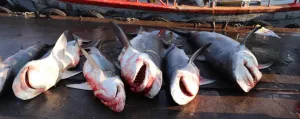Male infertility scoring using AI-assisted image classification requiring no programming
Clinicians at Toho University in Japan developed an AI-based scoring model for testis images to assess patients with severe male infertility. Creation of the image classifier on a cloud-based machine learning framework needed no help from data scientists.
2021-05-10
(Press-News.org) Infertility affects females and males equally. In male infertility, azoospermia (a medical condition with no sperm in semen) is a major problem that prevents a couple from having a child. For the treatment of patients with azoospermia, testicular sperm extraction (TESE) is required to obtain mature sperms. When examined, histological specimens are typically given a score, called the Johnsen score, on a scale of 1 to 10, based on the histopathological features of the testis.
"The Johnsen score has been widely used in urology since it was first reported 50 years ago. However, histopathological evaluation of the testis is not an easy task and takes much time due to the complexity of testicular tissue arising from the multiple, highly specialized steps in spermatogenesis. Our goal was to simplify this time consuming step of diagnosis by taking advantage of AI technology. To do this, we chose Google's automated machine learning (AutoML) Vision, which requires no programming, to create an AI model for individual patient data sets. With AutoML Vision, clinicians with no programming skills can use deep learning in building their own models without help from data scientists," said Dr. Hideyuki Kobayashi, Associate Professor of Urology department at Toho University School of Medicine (Fig. 1).
"The model we created can classify histological images of the testis without help from pathologists. I hope that our approach will enable clinicians in any field of medicine to build AI-based models which can be used in their daily clinical practice", he said.
To simplify the use of Johnsen scores in clinical practice, Dr. Kobayashi defined four labels: Johnsen score 1-3, 4-5, 6-7, and 8-10 (Fig. 2). He and his co-researchers obtained a dataset of 7155 images at magnification X400. All images were uploaded to the Google Cloud AutoML Vision platform. For the X400 magnification image dataset, the average precision (positive predictive value) of the algorithm was 82.6%, precision was 80.31%, and recall was 60.96% (Fig. 3).
AI has become popular and is being applied in all fields of medicine. However, the use of AI by clinicians in hospitals is still hampered by the need of help from data scientists in the proper use of AI. "The cloud-based machine learning framework we used is for everyone. It can become such a powerful tool in medicine that, in the near future, doctors in hospitals will be using AI-based medical image classifiers with ease, in the same way they use Microsoft PowerPoint or Excel now", Dr. Kobayashi said. He added, "The most difficult part was taking images of testis pathology and it was very time consuming. Two colleagues worked very hard to obtain all the images used in the study. I really appreciate their dedicated efforts."
Dr. Kobayashi's group has described the development of an AI-based algorithm for evaluating Johnsen scores combining original images (X400), which achieved high accuracy. This is the first report of an algorithm that can be used for predicting Johnsen scores without having to rely on pathologists and data science experts.
INFORMATION:
The study was published in Scientific Reports on 10 May, 2021
[Attachments] See images for this press release:

ELSE PRESS RELEASES FROM THIS DATE:
2021-05-10
Researchers at Linköping University, Sweden, have made several discoveries on the functioning mechanisms of the inner hair cells of the ear, which convert sounds into nerve signals that are processed in the brain. The results, presented in the scientific journal Nature Communications, challenge the current picture of the anatomical organisation and workings of the hearing organ, which has prevailed for decades. A deeper understanding of how the hair cells are stimulated by sound is important for such matters as the optimisation of hearing aids and cochlear implants for people with hearing loss.
In ...
2021-05-10
In 1884, Edwin Abbott wrote the novel Flatland: A Romance in Many Dimensions as a satire of Victorian hierarchy. He imagined a world that existed only in two dimensions, where the beings are 2D geometric figures. The physics of such a world is somewhat akin to that of modern 2D materials, such as graphene and transition metal dichalcogenides, which include tungsten disulfide (WS2), tungsten diselenide (WSe2), molybdenum disulfide (MoS2) and molybdenum diselenide (MoSe2).
Modern 2D materials consist of single-atom layers, where electrons can move ...
2021-05-10
UK landowners and conservationists welcome wider-spread use of Gene Conservation Units (GCUs) to help protect some of the rarest plants and insects, research at the University of York has shown.
In particular the Great Yellow Bumblebee and the Mountain Ringlet Butterfly, which are at risk of further population decline, would benefit from Gene Conservation Units, currently only employed for forest trees and agricultural species or their relatives.
Genetic diversity in these species is essential if they are to adapt to new, and often challenging, environmental conditions. Gene Conservation Units are areas of land managed to allow the recovery of species, and maintain evolutionary processes to enable them to adapt to environmental change.
For tree species, ...
2021-05-10
FRANKFURT. When the SARS-CoV-2 virus mutates, this initially only means that there is a change in its genetic blueprint. The mutation may lead, for example, to an amino acid being exchanged at a particular site in a viral protein. In order to quickly assess the effect of this change, a three-dimensional image of the viral protein is extremely helpful. This is because it shows whether the switch in amino acid has consequences for the function of the protein - or for the interaction with a potential drug or antibody.
Researchers at Goethe University Frankfurt and TU Darmstadt began networking internationally from the very start of the pandemic. Their goal: to describe the three-dimensional structures ...
2021-05-10
Thousands of sharks have been illegally caught in a Marine Protected Area (MPA) in the Indian Ocean, new research shows.
The MPA was created in 2010 around the Chagos Archipelago, also known as the British Indian Ocean Territory (BIOT), banning all fishing there.
The new study examined information on illegal fishing in the MPA - a vast (640,000 km²/250,000 mi2) area containing pristine and remote reefs.
Enforcement data suggests more than 14,000 sharks were caught in the MPA from 2010-20, but discussions with fishers in the region suggest the true number was "considerably ...
2021-05-10
BEER-SHEVA, Israel May 10, 2021 - Researchers from Ben-Gurion University (BGU), together with American and German colleagues, have developed new "molecular tweezers" to combat antibiotic-resistant bacteria. Their recently announced findings were published in Cell Chemical Biology.
For years, medical professionals have struggled with bacterial infections becoming increasingly resistant to antibiotics. These molecular tweezers may be the key to battling one of greatest public health issues of the 21st century.
"Our discovery prevents infection without building up antibiotic resistance, and it might even be preferable to develop treatments based on molecular tweezers rather than antibiotics," said BGU Department of Chemistry Prof. Raz Jelinek.
The research team, led ...
2021-05-10
Bamboo cricket bats are stronger, offer a better 'sweet spot' and deliver more energy to the ball than those made from traditional willow, tests conducted by the University of Cambridge show. Bamboo could, the study argues, help cricket to expand faster in poorer parts of the world and make the sport more environmentally friendly.
"The sound of leather on willow" may have delighted cricket lovers for generations but the sport should now consider making the blades of its bats with bamboo, say researchers from Cambridge's Centre for Natural Material Innovation. ...
2021-05-10
A group of UK academics are calling for targets for mental health in order to meet the healthcare challenges of the next decade.
Published today in Journal of Mental Health researchers set out four overarching goals that will speed up implementation of mental health research and give a clear direction for researchers and funders to focus their efforts when it comes to better understanding the treatment of mental health.
The treatment of mental illness currently brings substantial costs to not only the NHS, but also to the individual and wider society, and the need for innovation to promote good mental health has never ...
2021-05-10
New research being presented at the European Congress on Obesity (ECO) held online this year, suggests that among girls a low body mass index (BMI) during childhood indicates a higher risk of developing anorexia nervosa as young adults, whereas a high BMI or overweight in childhood indicates a higher risk of bulimia nervosa.
"By examining the records of thousands of girls over their lifetime in national health registers, we have discovered early warning profiles that could signal girls at risk for anorexia nervosa and bulimia nervosa", says lead author Dr Britt Wang Jensen ...
2021-05-10
New research being presented at The European Congress on Obesity (ECO) held online this year, suggests that a measure of body shape should be used alongside body mass index (BMI) to help determine the risk of obesity-related cancers.
BMI is a simple way of measuring body fat from the weight and height of a person. But its reliability is often criticised, because it does not distinguish fat from muscle, or take into account where body fat is stored or an individual's sex or age. Similarly, waist circumference takes into account belly fat, which is linked to several health risks ...
LAST 30 PRESS RELEASES:
[Press-News.org] Male infertility scoring using AI-assisted image classification requiring no programming
Clinicians at Toho University in Japan developed an AI-based scoring model for testis images to assess patients with severe male infertility. Creation of the image classifier on a cloud-based machine learning framework needed no help from data scientists.







